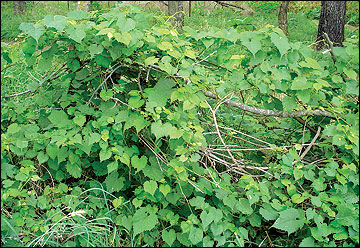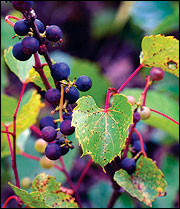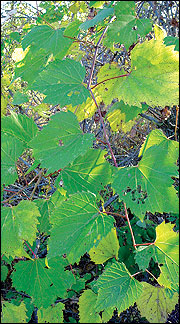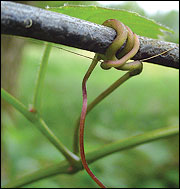Grapes, wild
- Vitis spp., Ampelopsis spp.
Woody
 Wild grape can quickly cover a brush pile, enhancing its value to quail.
Wild grape can quickly cover a brush pile, enhancing its value to quail.
Scott Sudkamp, Missouri Department of Conservation
Description
Grapes are vines capable of climbing to 75 feet or more by means of tendrils. Leaves are alternate, simple and heart-shaped (Vitis) to triangular (Ampelopsis). Flowers bloom from mid to late spring, and globe-shaped fruits are borne in drooping clusters from late summer through fall.
Use by bobwhites
The fruits are eaten by many species of birds, including bobwhites. Vines sometimes provide woody cover when they form a dense net and grow to cover brush piles and downed trees. Quail managers engaged in edge-feathering projects that drop mature trees can use this to their advantage by cutting trees with grapes attached. By cutting the tree but not the vine, the grapes will quickly spread to cover the downed tree, offering good summer and winter cover and putting the fruit in reach of bobwhites.






